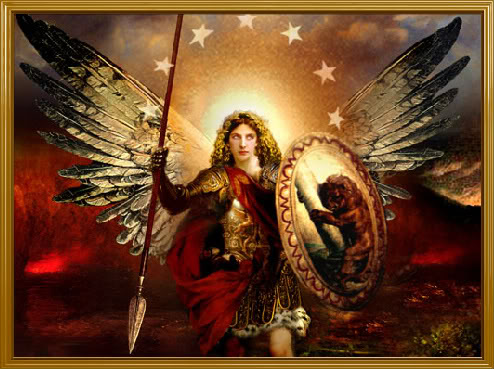There was no Jewish expectation in the first century that the Messiah would be a great miracle worker, so all of Jesus’ alleged miracles were of no interest to the first-century Jewish leaders, and they are of no interest to me.
There was no Jewish expectation in the first century that the Messiah would be a great miracle worker, so all of Jesus’ alleged miracles were of no interest to the first-century Jewish leaders, and they are of no interest to me.
There was no Jewish expectation in the first century that the Messiah would be a great miracle worker, so all of Jesus’ alleged miracles were of no interest to the first-century Jewish leaders, and they are of no interest to me.
I think you are misinformed, and I don’t believe you are being honest with yourself. First, there most definitely was first-century Jewish expectation concerning a miracle-working Messiah, in keeping with the predictions of the biblical prophets. Second, if you understood that Jesus the Messiah really did heal the sick, open blind eyes, and raise the dead, and that he is still performing miracles, I think this would be of considerable interest to you.
On several occasions, it is recorded in the New Testament that when Jesus healed the sick and performed miracles, the people wondered out loud as to whether he could be the Messiah. For example, Matthew tells us that on one occasion people “brought Jesus a demon-possessed man who was blind and mute, and Jesus healed him, so that he could both talk and see. All the people were astonished and said, ‘Could this be the Son of David?’ ” (Matt. 12:22–23; remember that “Son of David” meant “the Messiah”). Why did they respond in this way? Because it was commonly believed at that time that the Messiah would be a miracle worker! 61
On another occasion, the disciples of John the Baptist came to Yeshua and asked him, “Are you the one who was to come, or should we expect someone else?” (Luke 7:20). How did the Messiah respond to this question? Luke records,
At that very time Jesus cured many who had diseases, sicknesses and evil spirits, and gave sight to many who were blind. So he replied to the messengers, “Go back and report to John what you have seen and heard: The blind receive sight, the lame walk, those who have leprosy are cured, the deaf hear, the dead are raised, and the good news is preached to the poor. Blessed is the man who does not fall away on account of me.”
Luke 7:21–23
Do you see the significance of this? A number of religious Jewish men came to Jesus and wanted to know if he was really the Messiah. He responded by saying, “Watch this! I’m doing the works that the Messiah was expected to do.” In other words, “I’m the one!”
In fact, a lengthy description of the Messiah in the Dead Sea Scrolls—written even before the New Testament—describes God’s miraculous activity in conjunction with the reign of his anointed one in words almost identical to those just cited from Luke 7:21–23:
[For the hea]vens and the earth will listen to His Messiah, [and all] that is in them will not turn away from the holy precepts… . For the Lord will observe the devout, and call the just by name, and upon the poor he will place his spirit, and the faithful he will renew with his strength. For he will honour the devout upon the throne of eternal royalty, freeing prisoners, giving sight to the blind, straightening out the twisted… . And the Lord will perform marvelous acts such as have not existed, just as he sa[id] for he will heal the badly wounded and will make the dead live, he will proclaim good news to the meek, give lavishly [to the need]y, lead the exiled and enrich the hungry. 62
Where did these different Jewish groups get such ideas? From the Hebrew Bible! 63 There are several well-known passages in the Tanakh that speak of healings and miracles in conjunction with the Messianic age. For example, we read in Isaiah 35, a well-known Messianic prophecy, that when God visits his people, “Then will the eyes of the blind be opened and the ears of the deaf unstopped. Then will the lame leap like a deer, and the mute tongue shout for joy. Water will gush forth in the wilderness and streams in the desert” (Isa. 35:5–6). These were signs that God’s kingdom was arriving. Those who had been captive to oppressive sickness and disease were set free. 64
So, when Yeshua began to preach and teach in his hometown synagogue one Sabbath, it is written that he outlined the purpose of his mission by quoting from Isaiah 61, reading these words: “The Spirit of the Lord is on me, because he has anointed me to preach good news to the poor. He has sent me to proclaim freedom for the prisoners and recovery of sight for the blind, to release the oppressed, to proclaim the year of the Lord’s favor” (Luke 4:18–19, quoting portions of Isa. 61:1–3). Healings and miracles were thus part and parcel of the Messiah’s mission, and they formed some of his most impressive credentials.
Similar descriptions of the miracles of the Messianic age (whether performed by God himself or by his Messiah) are also found in the Talmudic literature (see, e.g., b. Sukkah 52a, where Messiah ben David raises Messiah ben Joseph from the dead), and a special token of divine favor believed to accompany some of the most saintly Talmudic sages was their miracle-working ability (in particular Honi the Circle Drawer and Hanina Ben Dosa). 65 In fact, throughout the ages—right up to our own day when the Lubavitcher Hasidim pointed to the alleged miracles of their rebbe as possible proof of his messiah-ship—Jews have commonly viewed the Messiah as a miracle worker of sorts. 66 Also, according to the fourth- to fifth-century Christian scholar Jerome, the false Messiah Bar Kochba (influential from 132 to 135 c.e.) performed counterfeit miracles to delude the people. 67
In any case, if there ever was a time when miracles were freely associated with the Messiah, it was the first century, when no such things as atheistic rationalism or secular humanism existed. You may have gotten your facts wrong because later Rabbinic teaching put more emphasis on the Messiah as a teacher or warrior. 68
As for not caring about miracles yourself, give it some thought the next time you or someone you love is faced with a serious illness or life-threatening condition. Perhaps the gracious healing power of Jesus the Messiah will seem more relevant to you then. 69
This is simply the reality of human nature: We are weak, frail, prone to sickness, and, as a race, riddled with terrible suffering and disease. Even though followers of Jesus are not exempt from sickness and pain—hardly!—they often experience the Messiah’s powerful and real touch, receiving healing and deliverance in some pronounced and wonderful ways. Many Jews have actually turned to God in repentance and put their faith in Yeshua the Messiah after they received healing from a serious physical or mental disorder.
Just ask David Yaniv about this. Born in Tel Aviv in 1936, he injured his back while working on a kibbutz, only to become paralyzed because of a neurosurgeon’s error during a spinal operation. For seven and a half years, he could move around only with the help of a wheelchair or crutches and heavy leg braces. After becoming terribly depressed, he finally resigned himself to follow his doctor’s advice to “learn to live with it” because the damage to his nerve was irreparable. Then he had two experiences that changed his life forever.
First, as a result of watching Christian programming that was aired on a Lebanese station, he met Yeshua as his Savior, receiving forgiveness of sins and a new heart. His wife soon met the Messiah too. Then, to David’s utter amazement, after a Christian woman received a “word” that someone watching that same Christian program was being healed of long-term paralysis from the waist down, he awoke the next morning to find his legs responding to stimuli. He was healed! Within days, he was walking on his own, having completely recovered from an incurable condition, to the absolute amazement of twenty-five doctors, neurosurgeons (including the surgeon whose error crippled David in the first place), and neurologists who came from across Israel to examine him. 70 More than fifteen years later, he is as healthy and fit as ever.
This modern-day, documented miracle is just another reminder that the Messiah came to set the captives free—in keeping with the prophecies of our own Hebrew Scriptures. When he returns to fully establish the kingdom of God on earth, he will perform even greater miracles than those we have seen to date.
61 I understand, of course, that in the time of Jesus there was not one, fixed Jewish view of what kind of man the Messiah would be and what exactly he would do. My point is that there were certainly Jews who were expecting a miracle-working Messiah, and his miracles would be part of the proof of his messiahship. On the diversity of Messianic expectations in the first century c.e., cf. Jacob Neusner, William S. Green, and Ernest Frerichs, Judaisms and Their Messiahs at the Turn of the Christian Era (Cambridge: Cambridge, 1987); Charlesworth, The Messiah; Collins, The Scepter and the Star; Craig A. Evans and Peter W. Flint, eds., Eschatology, Messianism and the Dead Sea Scrolls (Grand Rapids: Eerdmans, 1997); see also the important collection of older material in Leo Landmann, ed., Messianism in the Talmudic Era (New York: Ktav, 1979).
62 This is part of the text called the Messianic Apocalypse (4Q521, fragment 2), as translated in the standard scholarly edition of Florentino García Martínez, The Dead Sea Scrolls Translated (Leiden: Brill, 1994), 394. For discussion of this text and its striking parallels with some of the words and acts of Jesus, see the discussion in Collins, The Scepter and the Star, 117–22.
63 It is important to remember that, generally speaking, to the first-century Jewish community, the Judaism of the Dead Sea Scrolls was no more or less “normative” than the Judaism of the Pharisees or Sadducees, despite later Rabbinic reconstructions that give the impression that the other, non-pharisaical groups were completely marginal. This, of course, is not true. See Günter Stemberger, Jewish Contemporaries of Jesus: Pharisees, Sadducees, Essenes, trans. Allan W. Mahnke (Minneapolis: Fortress, 1995); and note Anthony J. Saldarini, Pharisees, Scribes, and Sadducees in Palestinian Society (Wilmington, Del.: Michael Glazier, 1988); cf. also above, n. 61.
64 See Genesis Rabbah 95:1 [Tanhuma Wayyigash 8] on this verse being fulfilled in the world to come.
65 For a discussion of Yeshua’s miracles in the context of other contemporaneous miracle workers in Judaism, cf. Geza Vermes, Jesus the Jew (Philadelphia: Fortress, 1973), especially 69–80. According to Vermes, “It is necessary to remember that from the time of the prophet Elijah Jews believed that holy men were able to exert their will on natural phenomena.”
66 With reference to various Messianic claimants in the first five centuries of this era, Patai, The Messiah Texts, xli, notes, “The belief in these self-proclaimed Messiahs and in their power to perform miracles could be so strong that it could override all normal instincts of self-preservation.”
67 See Schürer, History of the Jewish People, 1:544–45.
68 I refer here especially to Maimonides’s classic description of the Messiah that has become normative for many Jews, in which he actually downplayed the idea that the Messiah would be a miracle worker (cf. Mishneh Torah, Hilkhot Melakhim 11:3). In context, however, Maimonides used this description to deny any true Messianic credentials to Jesus, known by both friend and foe as an exceptional miracle worker. Interestingly, Joseph Klausner, The Messianic Idea in Israel, trans. W. F. Stinespring (London: George Allen, 1956), 506, stresses that “the Messiah—and this should be carefully noted!—is never mentioned anywhere in the Tannaitic literature as a wonder-worker per se” (his emphasis; his point was that it was God who performed the miracles at the time of the inbreaking of the Messianic kingdom). This can easily be viewed as a reaction of sorts to the emphasis on Yeshua’s miracles in early Messianic Jewish circles, a period contemporaneous with the Tannaim (i.e., first to second centuries c.e.). It is worth pointing out that the Talmudic rabbis spoke of all kinds of miraculous, almost cosmic transformations taking place in the Messianic age, and yet somehow downplayed miraculous healings. For further thoughts on the Rabbinic downplaying of the supernatural elements of messianism, cf. Jacob Neusner, Messiah in Context: Israel’s History and Destiny in Formative Judaism (Philadelphia: Fortress, 1984); note also Vermes, Jesus the Jew, 80–82, who explains why, by their very natures, Pharisees and “charismatic” Jews would have certain fundamental conflicts, observing quite tellingly that, “Since halakhah became the corner-stone of rabbinic Judaism, it is not surprising that, despite their popular religious appeal, Jesus, Hanina, and the others [referring to sages alleged to have miraculous powers; see above, n. 65], were slowly but surely squeezed out beyond the pale of true respectability.”
69 Obviously, I am not guaranteeing that you will be healed of disease if you become a follower of Jesus. I am simply saying that it is unrealistic for you to deny that healing and miracles are of importance to you. When the rubber meets the road and calamity hits home, you will find yourself seeking “faith” answers more than you expect. In fact, it is a common saying among ministers that many an atheist has suddenly become a profound believer on his or her deathbed!
70 For the whole story, see Roth, They Thought for Themselves, 11–23.
Brown, M. L. (2000). Answering Jewish objections to Jesus, Volume 1: General and historical objections. (98). Grand Rapids, Mich.: Baker Books.


